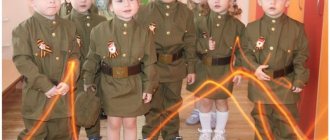Techniques for developing morality
Many methods of moral education are based on gentle and trusting interaction with children. This relationship includes mutual trust and respect for the child's personality.
Morality is cultivated not only by verbal methods, but also by visual activities. Everyday everyday tasks that require choices and actions play an important role.
Teachers use the following means of moral education:
- Creative means. Here you will need to familiarize children with artistic, musical and literary creativity. Art helps a child to realize and express the feelings that a person experiences in various situations, expressing them through fairy tales, music, and drawings.
- Contact with wildlife, interaction with animals. It is noteworthy that the zoo is poorly suited for the implementation of education - there the animals are locked up, in captivity. It is important to take your child out into nature, into the forest, and get to know the flora and fauna.
- Actually, the child’s activity itself is play, learning, creativity. The child’s already established values are expressed through activities.
- The right environment for the child. Family is the main means for raising a preschooler. There should be no insults, quarrels, or shouting between mom and dad. The child must be surrounded by respect, care, warmth, love - feel all these components towards himself and observe them between parents.
The content of moral education includes the perception of other people, oneself, animals and nature.
There is a high probability that the grown-up child will relate to people and nature in the same way as his parents did when he was a preschooler.





